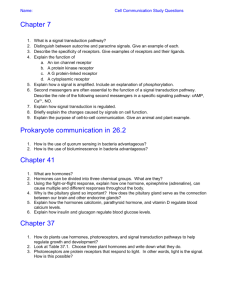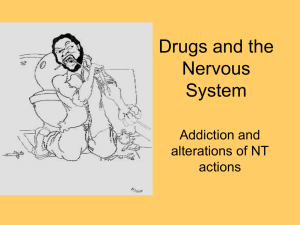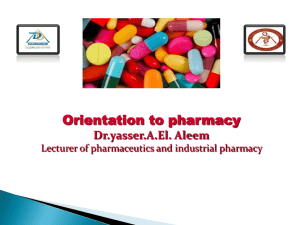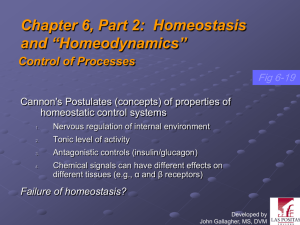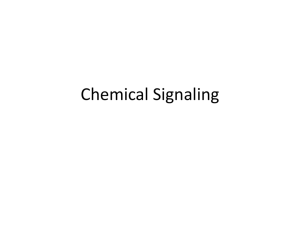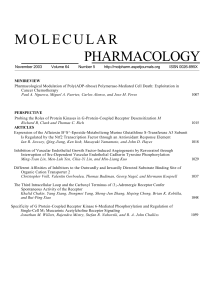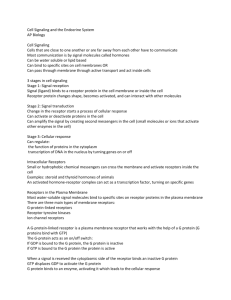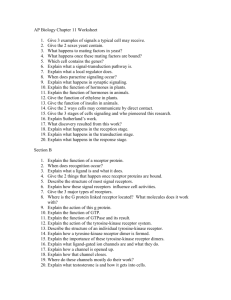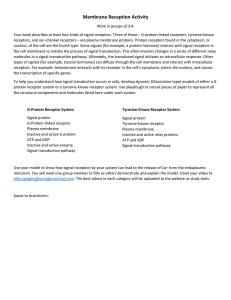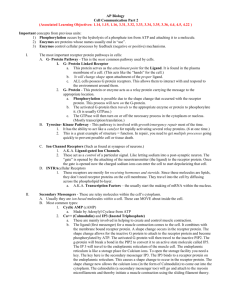Sample Mid-term Exam Questions
advertisement
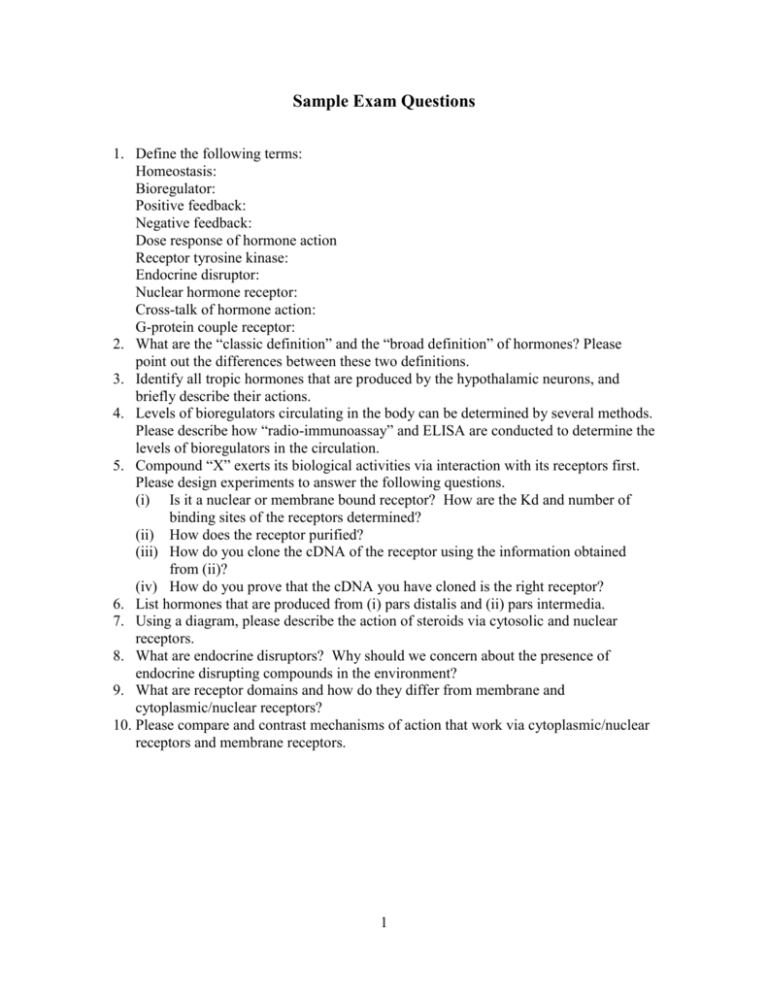
Sample Exam Questions 1. Define the following terms: Homeostasis: Bioregulator: Positive feedback: Negative feedback: Dose response of hormone action Receptor tyrosine kinase: Endocrine disruptor: Nuclear hormone receptor: Cross-talk of hormone action: G-protein couple receptor: 2. What are the “classic definition” and the “broad definition” of hormones? Please point out the differences between these two definitions. 3. Identify all tropic hormones that are produced by the hypothalamic neurons, and briefly describe their actions. 4. Levels of bioregulators circulating in the body can be determined by several methods. Please describe how “radio-immunoassay” and ELISA are conducted to determine the levels of bioregulators in the circulation. 5. Compound “X” exerts its biological activities via interaction with its receptors first. Please design experiments to answer the following questions. (i) Is it a nuclear or membrane bound receptor? How are the Kd and number of binding sites of the receptors determined? (ii) How does the receptor purified? (iii) How do you clone the cDNA of the receptor using the information obtained from (ii)? (iv) How do you prove that the cDNA you have cloned is the right receptor? 6. List hormones that are produced from (i) pars distalis and (ii) pars intermedia. 7. Using a diagram, please describe the action of steroids via cytosolic and nuclear receptors. 8. What are endocrine disruptors? Why should we concern about the presence of endocrine disrupting compounds in the environment? 9. What are receptor domains and how do they differ from membrane and cytoplasmic/nuclear receptors? 10. Please compare and contrast mechanisms of action that work via cytoplasmic/nuclear receptors and membrane receptors. 1
